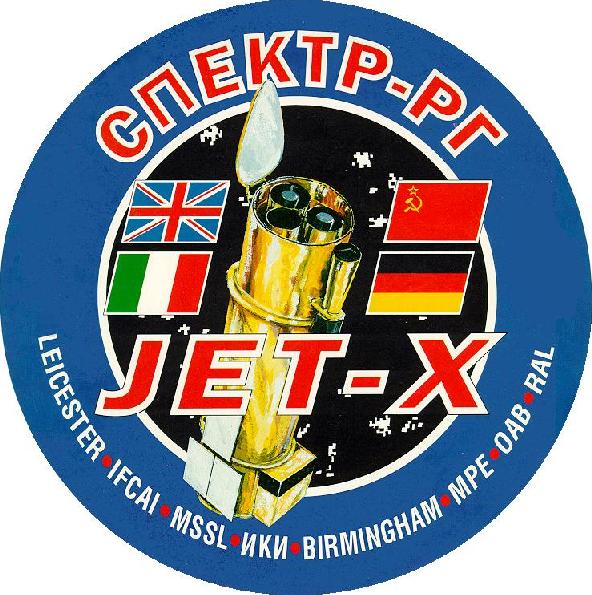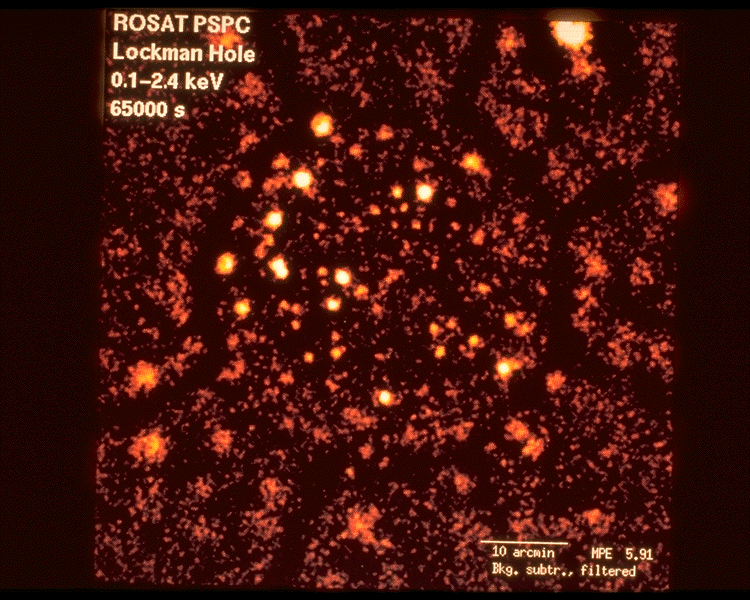

 |
 |
Jet-X at MSSL |
  |
Jet-X - Observations of Deep Fields |
Deep fields are observations trying to probe the faintest X-ray source populations. Figure 1 shows an example of a deep field taken with the ROSAT satelite towards a region of low line of sight Galactic column which minimises the effect of absorption within our own galaxy.

Figure 1. The
deepest and longest observation with the ROSAT PSPC was pointed in the center
of the Lockman Hole in the constellation of the Ursa Major (the Big
Dipper). This is the direction of the minimum column density of Galactic
hydrogen (roughly between the pointer stars of the Big Dipper), which allows
the most sensitive search for extragalactic objects. More than 60% of the
extragalactic background above 1 keV can be resolved into over 100 discrete
X-ray sources.
Image courtesy of the Max Plank
Institute
Observations of such fields are crucial towards the understanding of the evolution and nature of active galactic nuclei (AGN: for a beginners guide to AGN see here) and to the X-ray background. In the case of AGN, deep surveys allow a study of the evolution of AGN out to high redshift (z > 2). For an example of a study of the evolution of AGN go here). In the case of the X-ray background, one of the outstanding problems is its very nature - what is it made from. At the sort of flux levels seen in these deep fields (of the order of 10-15 ergs/cm2/s (0.5 - 2 keV)) the point sources are dominated by extragalactic sources and at least 50% of these are AGN. They are also revealing that at these faint X-ray fluxes there are different extragalactic source populations which begin to contribute more strongly, especially the narrow line X-ray galaxies (NELGs). However, it is important to realise that ROSAT could only look at soft X-rays (0.1 - 2 keV). Jet-X, on the other hand, has a much larger energy coverage (0.3 - 10 keV) with a similar point response so will be able to undertake the same studies at much higher energies.
Astrophysics
group Homepage
MSSL Homepage